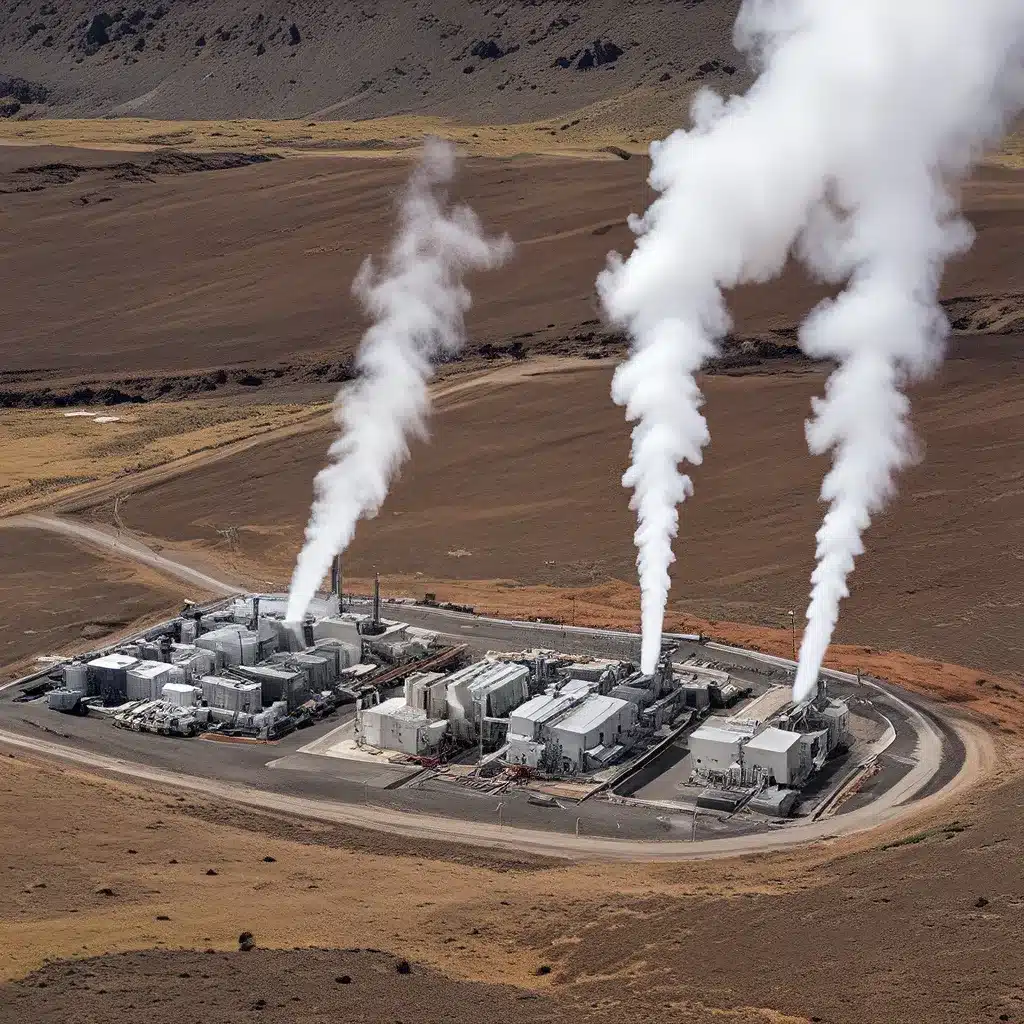
In a world consumed by the relentless pursuit of sustainable solutions, a remarkable energy revolution is quietly unfolding beneath our feet. Geothermal energy, once considered a niche player in the renewable energy landscape, is now poised to take center stage and transform the way we power our homes, businesses, and communities.
Picture this: a sprawling community where every single residence draws its heating and cooling from the earth’s natural heat reserves, harnessing the planet’s boundless energy with the simple twist of a thermostat. Welcome to the Town at Trilith, a visionary project that is not only redefining the future of real estate but also charting a path towards a greener, more sustainable tomorrow.
As I stroll through the meticulously designed streets of Trilith, I’m struck by the quiet hum of geothermal systems seamlessly powering these homes. It’s a symphony of innovation, where billionaire Dan Cathy’s vision for Chick-fil-A has evolved into a grand experiment in renewable energy and sustainable living.
Tapping into the Earth’s Limitless Potential
The U.S. Department of Energy (DOE) has taken note of this geothermal revolution, committing a staggering $60 million to unlock the power that lies beneath our feet. This investment is fueling three pioneering projects, each tasked with overcoming the technical challenges of tapping into the Earth’s vast geothermal reserves.
At the forefront of this venture are industry giants like Chevron New Energies, Fervo Energy, and Mazama Energy, each embarking on ambitious pilot projects designed to showcase the feasibility and scalability of Enhanced Geothermal Systems (EGS) technologies.
Chevron’s venture in California’s Sonoma County seeks to refine drilling and stimulation techniques, allowing for efficient access to geothermal energy in established fields. Fervo Energy’s project in Utah’s Milford Renewable Energy Corridor aims to harness at least 8 megawatts of power from three innovative wells. Meanwhile, Mazama Energy’s endeavors focus on mastering the operation under extreme heat conditions, a critical step towards widespread geothermal deployment.
As these projects unfold, the DOE’s vision of leveraging the heat beneath our feet comes closer to reality, marking a significant step towards a sustainable energy future. Secretary of Energy Jennifer M. Granholm heralds this investment as a pivotal moment for geothermal energy, promising to expand its reach to previously untapped American regions.
The Geothermal Revolution in Action
The Town at Trilith stands as a shining example of this geothermal revolution in action. Rob Parker, the president of Trilith Development, proudly declares, “We use the Earth to heat and cool our homes.” This isn’t just an empty claim; it’s a powerful reality that is transforming the lives of Trilith’s residents.
By tapping into the Earth’s natural heat reserves through the use of wells and heat pumps, Trilith’s 750 planned single-family residences are able to eliminate the need for traditional fossil fuel-based heating and cooling systems. The result? A drastic reduction in emissions and a significant long-term savings on energy costs.
But Trilith is not alone in this geothermal journey. Across the nation, master-planned geothermal communities are emerging as a growing trend, with projects like Whisper Valley in Austin, Texas, poised to become the largest geothermal development in the country.
The Geothermal Exchange Organization, led by President Ryan Dougherty, affirms that it’s not just residential geothermal that’s thriving; the commercial and institutional markets are experiencing rapid growth as well. From the Louisville Muhammad Ali International Airport to the multifamily development 1 Java Street in New York, geothermal energy is making its mark on diverse sectors.
The Versatility and Potential of Geothermal
One of the most remarkable aspects of geothermal energy is its geographic versatility. Unlike other renewable energy sources that are heavily dependent on location, geothermal can thrive in all 50 states, as long as buildings are designed with geothermal characteristics in mind.
The process is simple, yet revolutionary: you harness the Earth’s heat in the winter and return it in the summer. It’s a powerful concept that can transform any structure into a sustainable oasis, regardless of its geographical location.
This versatility has led to a surge of interest and adoption in diverse regions, from the bustling urban landscapes of New York City to the charming small towns of Georgia. The Inflation Reduction Act, a landmark climate policy enacted by the Biden administration, has also played a significant role in driving the adoption of geothermal technology through supportive policies and incentives.
The Unstoppable Rise of Geothermal Energy
As I wander through the meticulously designed streets of Trilith, I can’t help but feel a sense of awe and excitement. This community is not just a testament to the power of geothermal energy; it’s a living, breathing symbol of a future where sustainability and innovation go hand-in-hand.
For the residents of Trilith, geothermal energy is not optional – it’s a non-negotiable requirement. This unwavering commitment is driven by a triple-edged sword of environmental, financial, and lifestyle benefits that are transforming the way we think about energy and the way we live.
The rise of geothermal energy is not limited to a specific type of development; it’s a phenomenon that is rapidly gaining momentum across the nation. From urban high-rises to rural homesteads, the boundless clean power waiting deep beneath the Earth’s surface is poised to revolutionize the way we power our lives.
As I prepare to leave Trilith, I can’t help but feel a sense of optimism and hope. The future of energy is not just in the wind or the sun, but also in the untapped potential of the Earth itself. And with pioneers like Trilith leading the charge, I can’t wait to see what the next chapter of the geothermal revolution will bring.

